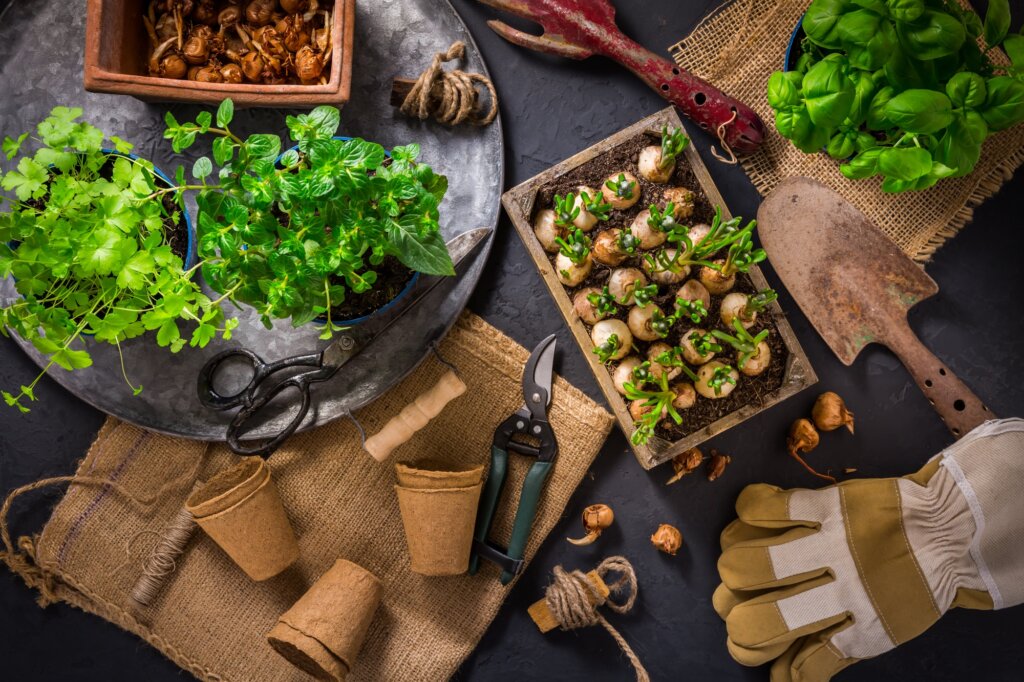Across the UK and beyond, there’s a remarkable shift underway: more people are choosing to grow their own food—as herbs, vegetables, and even fruit—even in flats, on balconies, and in tiny yards. This resurgence isn’t a passing trend—it’s driven by powerful forces including food security, environmental concern, health benefits, and mental well-being. In 2025, the movement toward homegrown produce is stronger than ever—and here’s exactly why it matters.
1. The Urban Gardening Boom
Despite only 1% of UK urban green space used for formal allotments, cities are bursting with untapped potential. Experts estimate that utilising just 10 % of urban gardens and green spaces could provide 5-a-day fruit and veg portions for 15% of Sheffield’s population. With 87% of UK households having access to a garden—and 28% maintaining vegetable patches—many are realizing they don’t need a backyard to grow produce.
This growth isn’t surprising: the pandemic sparked a gardening renaissance, with 35% of UK adults planting veggies, herbs, or fruit, and online searches for gardening skyrocketing.
2. Sustainability & Food Security
With climate change and supply chain risks dominating headlines, growing your own food—even on a flat balcony—offers tangible benefits:
- Reduced food miles: Adopting foodscaping, or integrating edible plants into outdoor spaces, can cut carbon emissions linked to transport.
- Lower dependency on imports: Vertical farming, container gardening, and community plots are boosting local resilience.
- Urban food surplus: In Sheffield alone, repurposed private green spaces could feed 15% of the city’s population healthy veggies.
This isn’t idealism—it’s practical climate action and food independence.
3. Pocket-Friendly & Accessible
From budget-friendly balconies to windowsills, “foodscaping” enables people to grow fresh produce affordably:
- Smart planting: Pairing herbs or salad greens with ornamental plants brings beauty and harvest.
- Vertical stacking: Indoor vertical farms using hydroponics or aeroponics make even tiny spaces productive.
- Affordable entry: Starting with seeds and upcycled containers makes gardening accessible to nearly anyone.
Plus, with a median value of $200–$500 (approx. £160–£400) per plot from urban gardens, the ROI is clear.
4. Wellness, Mental Health & Community
Science backs it: gardening improves mood, reduces stress, and strengthens community ties. A community garden in Flint, Michigan, led to participants consuming 1.4× more fruit and veg and being 3.5× more likely to eat five-a-day. UK surveys also highlight improved mental health from gardening, including less anxiety and stronger neighbourhood bonds.
Next-gen trends show people must tending to gardens for mental space and well-being, creating urban sanctuaries.
5. Design Trends Driving Uptake
Gardening has gone mainstream into interior style, with 2025 featuring:
- Edible landscaping (foodscaping): blending fruit, herbs, and flowers with ornamental design.
- Pollinator-friendly & native planting: enhancing biodiversity while growing food.
- Container gardens: suits flats and even office spaces—micro-gardens on windowsills.
- Intelligent gardening tools: from app-controlled irrigation to indoor smart farms.
These trends merge aesthetic appeal, convenience, and sustainability.
6. Case Study: Incredible Edible Todmorden
The Incredible Edible movement, started in Todmorden in 2008, transformed public spaces into communal food gardens. Now 120+ UK groups and 700+ worldwide follow the model, embedding growing into everyday landscapes: schools, stations, parks.
Incredible Edible’s work generated a 37% increase in produce output and secured a £500k grant, showcasing community power in food resilience.
7. Rooftops, Balconies & Urban Gardens
Even high-rise residents are joining in. A former bar manager turned “Cloud Gardener” transformed Manchester balcony into edible oasis—leading to Manchester hosting the first RHS Urban Show. Wild gardening, embracing native species, is also on the rise in 2025.
Emerging tech like 3D mapping verifies urban surfaces for micro-farming, offering new rooftop or façade planting opportunities in dense cities.
8. Challenges & How to Overcome Them
While growing food in flats has many benefits, some common challenges include:
- Space & sunlight: Use compact, fast crops like herbs, salad greens, dwarf tomatoes.
- Learning curve: Resources like Incredible Edible and RHS offer guides for beginners.
- Pest control & soil: Use organic, container-safe media and companion planting to deter pests.
- Fear of failure: Embrace “chaos gardening”—letting nature guide growth.
With planning and persistence, even windowsill gardens can yield satisfying results.
9. The Future: Urban Agriculture & Tech
Expect more integration of agriculture and architecture:
- Vertical farms & aeroponics: Bringing controlled growing indoors and closer to consumers.
- AI-enhanced indoor gardening: Sensors track plant health, automate watering, and optimize growth.
- Community food hubs: Shared growing spaces in urban developments and neighbourhoods.
These innovations will make home food-growing smarter, scalable, and integrated into city life.
🌱 Final Thoughts
There’s never been a better moment to grow your own food—no matter where you live. From tiny flats to bustling cities, gardening today blends wellness, design, sustainability, and community, all while feeding ourselves or our neighbours.
Whether you’re planting your first herb pot or dreaming of community orchards, home food-growing is a movement rooted in empowerment and connection. It invites us to rethink where food comes from—and the joy of watching it grow.
And if you’re thinking of relocating to a greener, slower lifestyle—or just need a peaceful base while exploring your plant-growing journey—Nezt offers long-stay accommodation in locations where nature, space, and lifestyle all align.
Visit Nezt.co.uk to explore flexible stays that feel like home.



